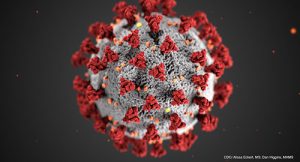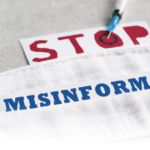 PHILADELPHIA—When it comes to preventing and treating COVID-19, we’ve come a long way since December 2019. But many of our patients are still at risk, and much of that risk is our fault. Immunosuppressants change and save lives, but the tradeoff is an increased risk of infections.
PHILADELPHIA—When it comes to preventing and treating COVID-19, we’ve come a long way since December 2019. But many of our patients are still at risk, and much of that risk is our fault. Immunosuppressants change and save lives, but the tradeoff is an increased risk of infections.
The good news? We’re now better equipped than ever to keep our patients safer.
At ACR Convergence 2022, Anna Helena Jonsson, MD, PhD, an instructor in medicine at Harvard Medical School, Boston, and an associate physician at Brigham and Women’s Hospital, Boston, shared practical updates on the ways to best protect our pediatric and adult patients with rheumatic disease from COVID-19.
Outpatient Management of COVID-19
Dr. Jonsson stated, “Outpatient medicine is really where the battlefield is now, and it’s our immunosuppressed patients who remain vulnerable. It’s about educating them and educating ourselves about new medication options and new COVID variants.”
We’re fortunate to have several frequently updated resources (see COVID-19-Resources) to guide COVID-19 care in the outpatient setting. In these guidelines, all immunosuppressed people are considered high risk. “Which medication they’re on technically doesn’t matter, though in reality some medications are higher risk than others,” Dr. Jonsson clarified.
Dr. Jonsson discussed a recent study that found that “even in the Omicron era, aggressive outpatient treatment pays off in immunosuppressed patients.” This was a retrospective cohort study that examined patients with systemic autoimmune rheumatic disease between January and May 2022 (i.e., Omicron variants during the post-vaccine era).1 An 80% reduction in hospitalization and death was seen in the whole cohort, which remained true regardless of age, renal function, vaccination status or duration since last vaccination. Dr. Jonsson said, “What this tells me is that as a rheumatologist, I cannot get lazy now, even if Omicron is milder than what came before. COVID-19 treatment can save lives and reduce morbidity in the outpatient setting.”
Treatment Options
So what treatment should we choose? First-line treatment remains nirmatrelvir/ritonavir (Paxlovid) for both adults and children aged 12 years and older, given an 89% reduction in severe COVID-19 when compared with placebo in a phase 2/3 trial.2 The omicron variant remains susceptible. However, the medication needs to be started within five days of symptom onset to work. “So, tell your patient to call you right away, and prescribe it right away,” Dr. Jonsson advised.
Although effective, Paxlovid isn’t without downsides. Medication interactions are a major concern but can be navigated via dosage adjustments. Dr. Jonsson recommended checking for interactions manually with the University of Liverpool website.3 “Just type ‘Liverpool COVID’ into your search engine and it comes up,” she said. Contraindications include but aren’t limited to glomerular filtration rates less than 30 mL/min/1.73 m2, severe hepatic impairment, certain medications, age less than 12 and a weight less than 40 kg.
Another concern is “rebound” COVID-19 infections (recurrence of COVID-19 symptoms and/or a new positive viral test after having tested negative).4 “Rebound infections occur in less than 10% of individuals and are probably more common among immunosuppressed patients. Most are mild and transient and don’t require a new round of Paxlovid. But if you have patients on strong immunosuppressants (e.g., rituximab, cyclophosphamide) you might want to consider giving them a second round,” Dr. Jonsson said.
If Paxlovid isn’t an option, remdesivir, monoclonal antibodies and molnupiravir are available. However, Dr. Jonsson kindly warned us that treatment recommendations are always changing, so it’s important to identify and follow local guidance.
Remdesivir is considered second-line for outpatient treatment of COVID-19 in adults and children, but the logistical challenge of three daily outpatient infusions complicates its use. For children younger than 12 years of age, remdesivir is the only option approved by the U.S. Food & Drug Administration (FDA), but there’s “insufficient evidence” to recommend it in this group. Therefore, Dr. Jonsson recommended that we triage our pediatric patients based on overall risk.
“High-risk cases would include patients taking rituximab, mycophenolate mofetil, Janus kinase inhibitors, abatacept, azathioprine or combination immunosuppressants. That’s because these reduce vaccine responses, which is almost the biggest risk factor right now,” she added.
Dr. Jonsson also encouraged us to think about co-morbidities that are risk factors for severe COVID-19 infection (e.g., diabetes and severe asthma) when deciding whether or not to use remdesivir in this age group. These risk factors are listed in a helpful table on the National Institutes of Health website.5
Monoclonal antibodies are third-line options in adults and children aged 12 or older, and only require a single intravenous dose. However, bebtelovimab (the monoclonal antibody currently available) doesn’t work against new variants. New monoclonal antibodies should be available soon.
Molnupiravir should be considered a last resort for dire situations in which there are no other options. It’s contraindicated in patients younger than 18 years of age and should be avoided in both children and adults because it could, in theory, incorporate mutations into human DNA.
“It’s hard to imagine a scenario in which neither Paxlovid nor remdesivir are available options, barring supply issues,” Dr. Jonsson said.
Pre-Exposure Prophylaxis
Tixagevimab/cilgavimab (Evusheld) received Emergency Use Authorization from the FDA for patients with moderate to severe immunosuppression in December 2021 and was a great addition to our prevention armamentarium. Unfortunately, new COVID-19 variants are resistant to it, and it’s unclear how much longer it will remain in use. “We’re hopeful there are some replacements in the pipeline,” Dr. Jonsson said.
Recovery After COVID-19
Dr. Jonsson took care to stress that time-based criteria for clearance of COVID-19 aren’t suitable for immunosuppressed patients. Rather, home-based antigen tests to confirm viral clearance are a better strategy. Polymerase chain reaction tests aren’t recommended for this purpose because they can remain positive for weeks. “A positive home antigen tests means you have live virus in your nose that you’ll be sharing with people around you,” Dr. Jonsson said.
It’s also important to inform patients about the possibility of “rebound infection” after outpatient therapy and what to do. “If symptoms are mild, patients can just wait it out. If they have fevers or other severe symptoms, they should call for consideration of another round of treatment,” Dr. Jonsson advised.
In Sum
Dr. Jonsson concluded by stressing how important it is to discuss COVID-19 with our patients at every clinic visit. She said, “Talk about the importance of vaccines. Make sure they have home antigen tests ready to go. And tell them to call you, the prescriber of immunosuppressants, and not the primary care provider if they’re experiencing symptoms. Treat all immunosuppressed patients, and know what options are available in your area.”
 Samantha C. Shapiro, MD, is the executive editor of Harrison’s Principles of Internal Medicine. As a clinician educator, she practices telerheumatology and writes for both medical and lay audiences.
Samantha C. Shapiro, MD, is the executive editor of Harrison’s Principles of Internal Medicine. As a clinician educator, she practices telerheumatology and writes for both medical and lay audiences.
References
- Qian G, Wang X, Patel NJ, et al. Outcomes with and without outpatient SARS-CoV-2 treatment for patients with COVID-19 and systemic autoimmune rheumatic diseases: A retrospective cohort study. 2022 Oct 30:2022.10.27.22281629. Preprint.
- Hammond J, Leister-Tebbe H, Gardner A, et al. Oral nirmatrelvir for high-risk, nonhospitalized adults with Covid-19. N Engl J Med. 2022;386(15):1397–1408.
- University of Liverpool. COVID-19 Drug Interaction Checker. https://www.covid19-druginteractions.org/checker. [cited 2022 Nov 28].
- Centers for Disease Control and Prevention. CDC Health Advisory. COVID-19 rebound after Paxlovid treatment. 2022 May 24. https://emergency.cdc.gov/han/2022/pdf/CDC_HAN_467.pdf.
- National Institutes of Health. Therapeutic management of nonhospitalized children with COVID-19. Table 3b. The panel’s framework for assessing the risk of progression to severe COVID-19 based on patient conditions and COVID-19 vaccination status. Updated 2022 Aug 8. https://www.covid19treatmentguidelines.nih.gov/tables/assessing-risk.
COVID-19 Resources to Bookmark & Check Frequently
- National Institutes of Health COVID-19 Treatment Guidelines
- Medications: https://www.covid19treatmentguidelines.nih.gov/therapies
- Immunosuppressed people: https://www.covid19treatmentguidelines.nih.gov/special-populations/immunocompromised
- Children: https://www.covid19treatmentguidelines.nih.gov/management/clinical-management-of-children
- Assessing risk: https://www.covid19treatmentguidelines.nih.gov/tables/assessing-risk
- Centers for Disease Control and Prevention information for pediatric providers: https://www.cdc.gov/coronavirus/2019-ncov/hcp/pediatric-hcp.html
- American Academy of Pediatrics COVID-19 treatment guidelines: https://www.aap.org/en/pages/2019-novel-coronavirus-covid-19-infections/clinical-guidance/outpatient-covid-19-management-strategies-in-children-and-adolescents
- ACR COVID-19 guidance: https://www.rheumatology.org/Practice-Quality/Clinical-Support/COVID-19-Guidance
- Children’s Hospital of Philadelphia COVID-19 outpatient treatment guidelines: https://www.chop.edu/clinical-pathway/covid-disease-therapies-severity-illness-non-hospitalized-children
- University of Liverpool COVID-19 Drug Interactions: https://www.covid19-druginteractions.org



